FREE OSSLT Reading Book 1 Questions and Answers
For what reason was Chainey happy with her performance at the national championships?
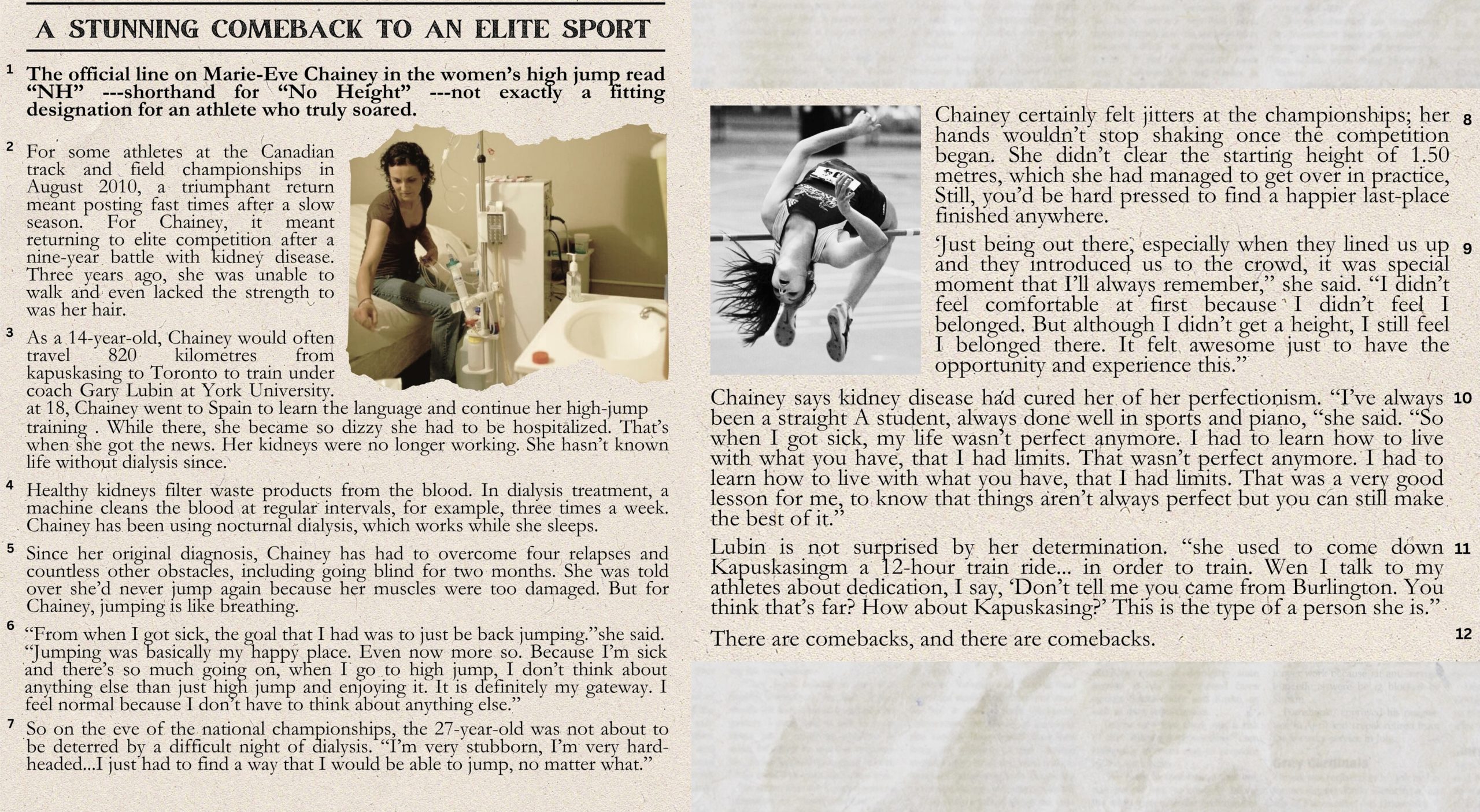
Chainey was satisfied with her finish at the national championships because she had returned to the sport she enjoyed. Despite not clearing the starting height and not achieving a height during the competition, she still felt a sense of belonging and fulfillment. She expressed her contentment by stating, "But although I didn’t get a height, I still feel I belonged there. It felt awesome just to have the opportunity and experience this.” This indicates that her satisfaction stemmed from the opportunity to participate in the championships and experience the moment, rather than achieving a specific performance outcome.
When Chainey's kidney ailment was discovered, where was she residing?

Marie-Eve Chainey was living in Spain when she was diagnosed with kidney disease. This is evident from the passage where it mentions, "at 18, Chainey went to Spain to learn training . While there, she became so dizzy she had to be hospitalized. That’s when she got the news. Her kidneys were no longer working." Therefore, the correct answer is:
Spain
What does paragraph one's use of dashes mean?
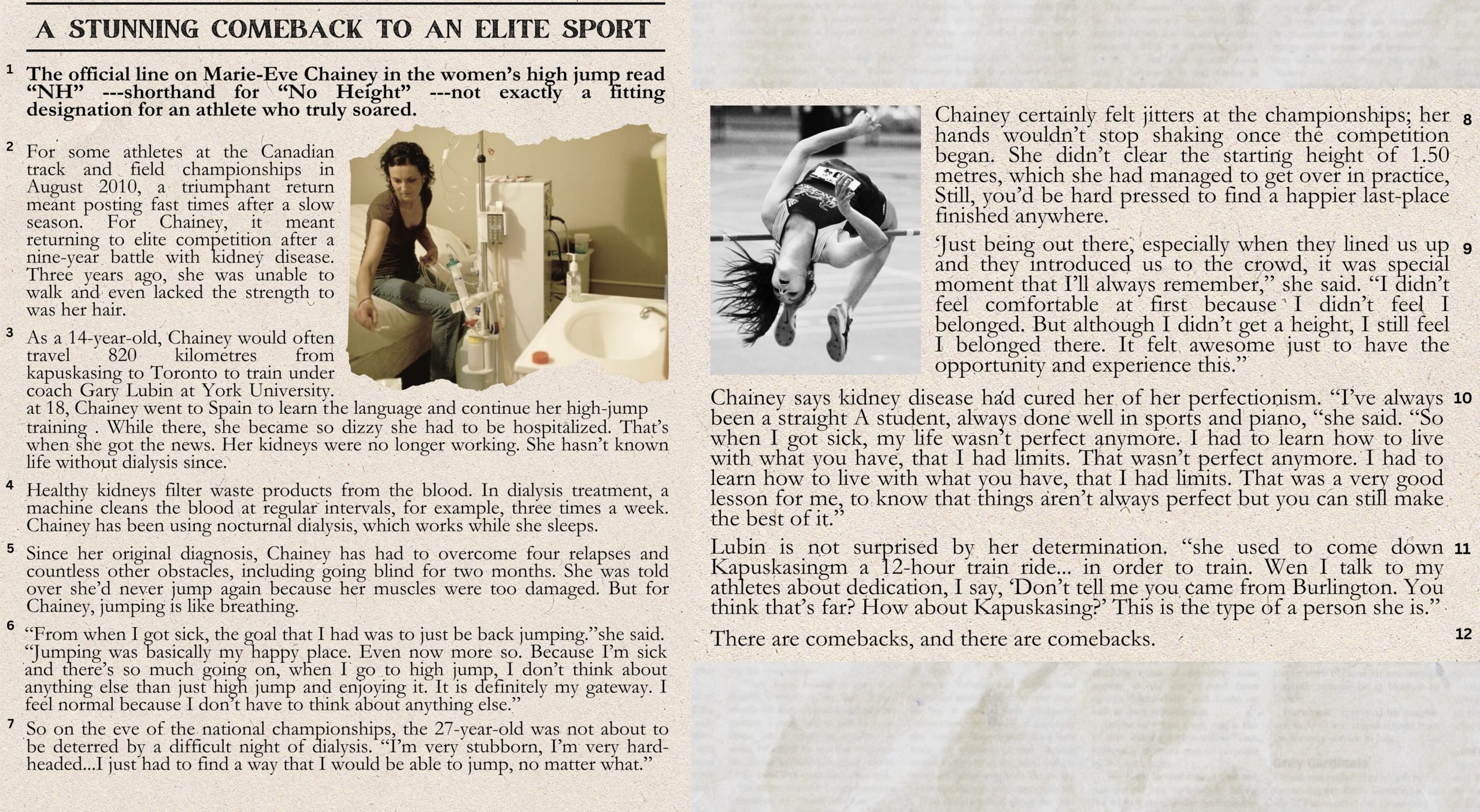
The purpose of the dashes in paragraph 1 is to set off an explanation. In this context, the dashes are used to provide a clarification or expansion of the abbreviation "NH," which stands for "No Height." The text after the dashes explains that "NH" is shorthand for "No Height," thereby providing further context for readers who may not be familiar with the terminology used in track and field competitions.
Therefore, the correct answer is: to set off an explanation
Which term, in connotation, most closely like the word "deterred" in paragraph 7?
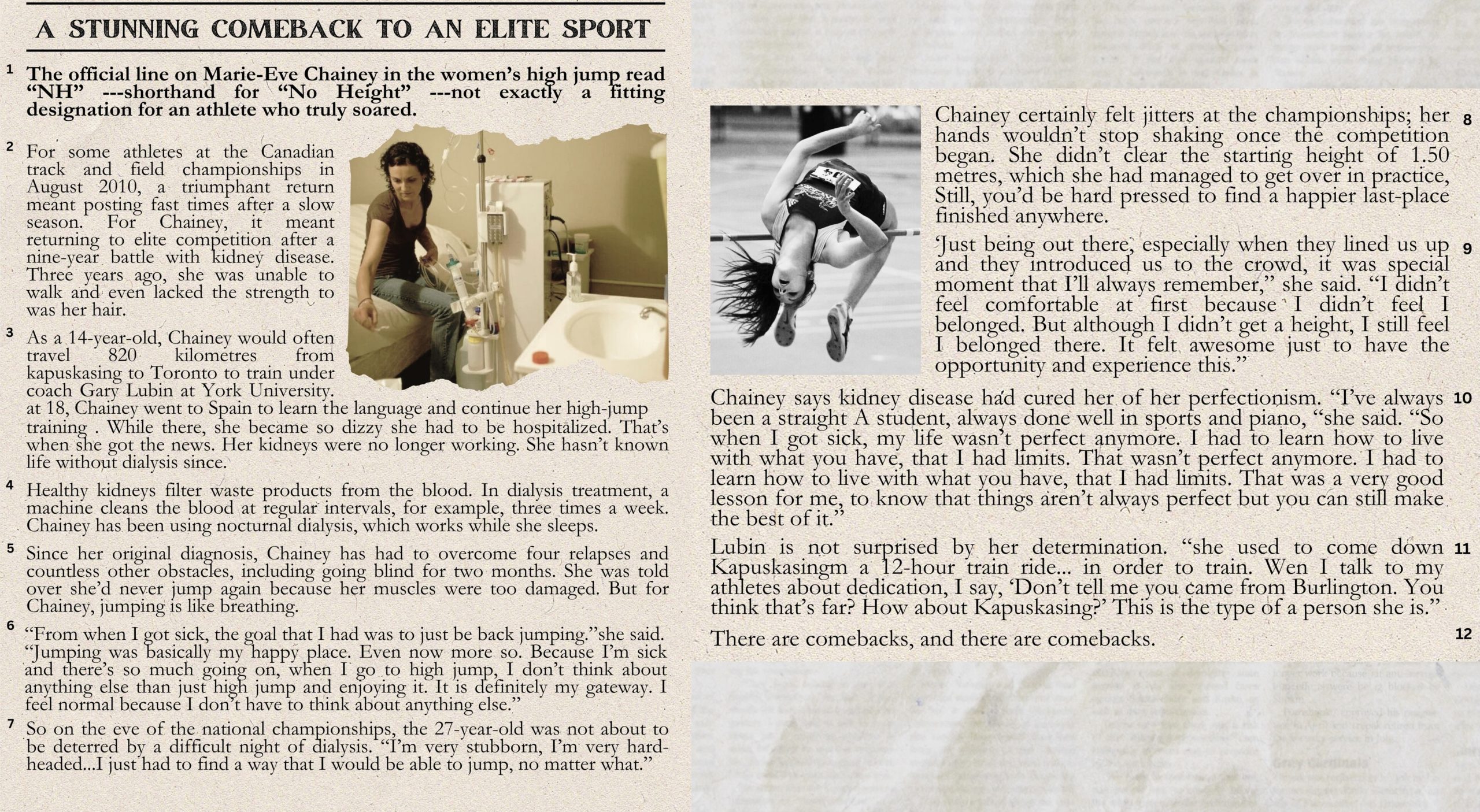
The word "deterred" as used in paragraph 7 means "stopped" or "prevented." It refers to the idea that despite facing challenges or difficulties, Marie-Eve Chainey was not going to allow anything to prevent her from participating in the national championships.
Therefore, the correct answer is: stopped
What effects did Chainey's kidney ailment cause?
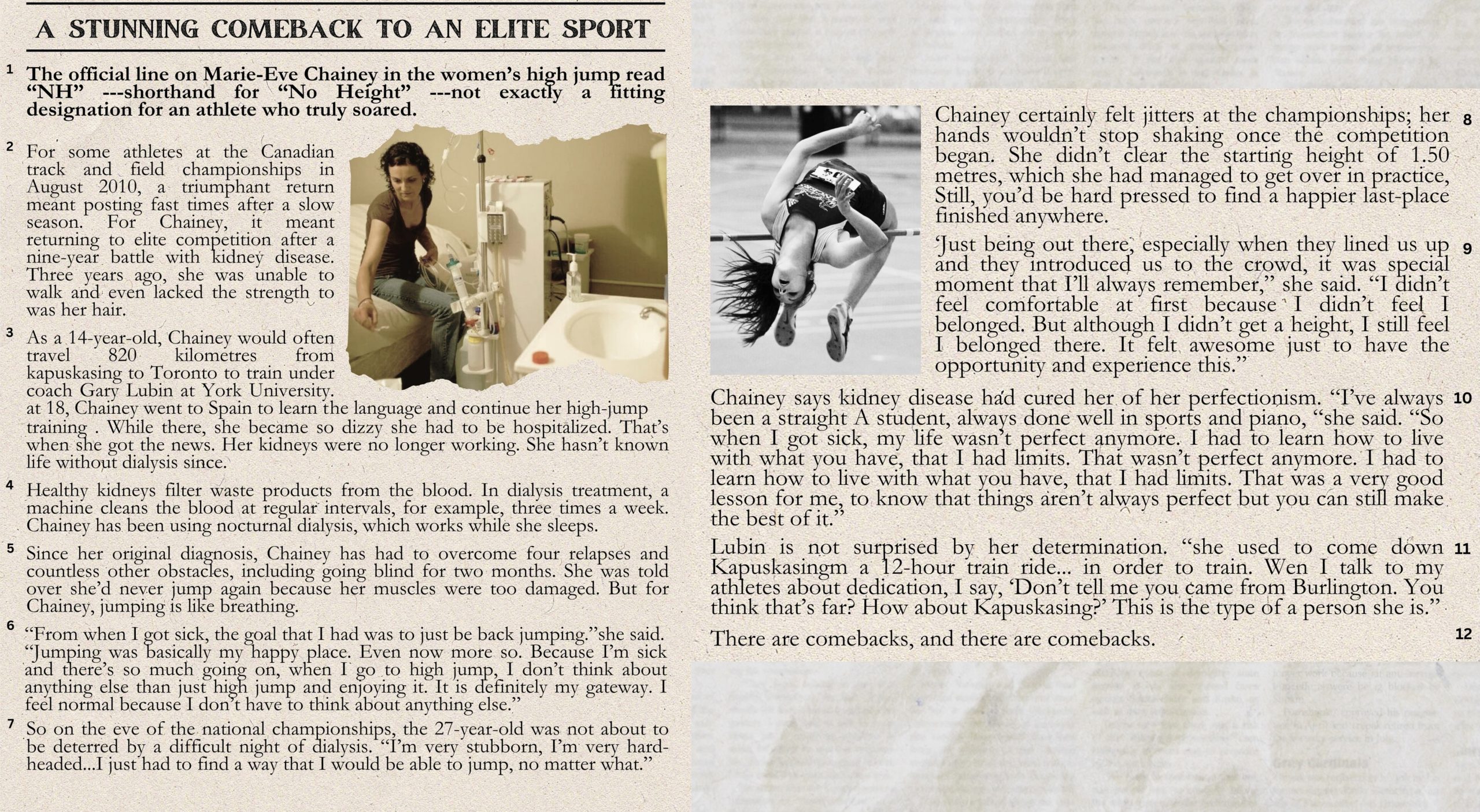
The impact of kidney disease on Chainey was that she no longer expected to be flawless in what she attempted. This is evident from her statement, "So when I got sick, my life wasn’t perfect anymore. I had to learn how to live with what you have, that I had limits." This indicates that her experience with kidney disease taught her to accept imperfections and limitations in life. It shifted her perspective from striving for perfection to making the best of her situation and embracing the journey despite its challenges. Therefore, the correct answer is: Chainey no longer expected to be flawless in what she attempted
How did Chainey show her commitment to high jumping right away?

Early on, Marie-Eve Chainey demonstrated her dedication to high jumping by frequently traveling long distances to train at York University in Toronto under coach Gary Lubin. This is evident from the passage where it states, "As a 14-year-old, Chainey would often travel 820 kilometres from Kapuskasing to Toronto to train under coach Gary Lubin at York University." Therefore, the correct answer is:
She frequently traveled long distances to train at York University
How are the contents of paragraphs one through three arranged?
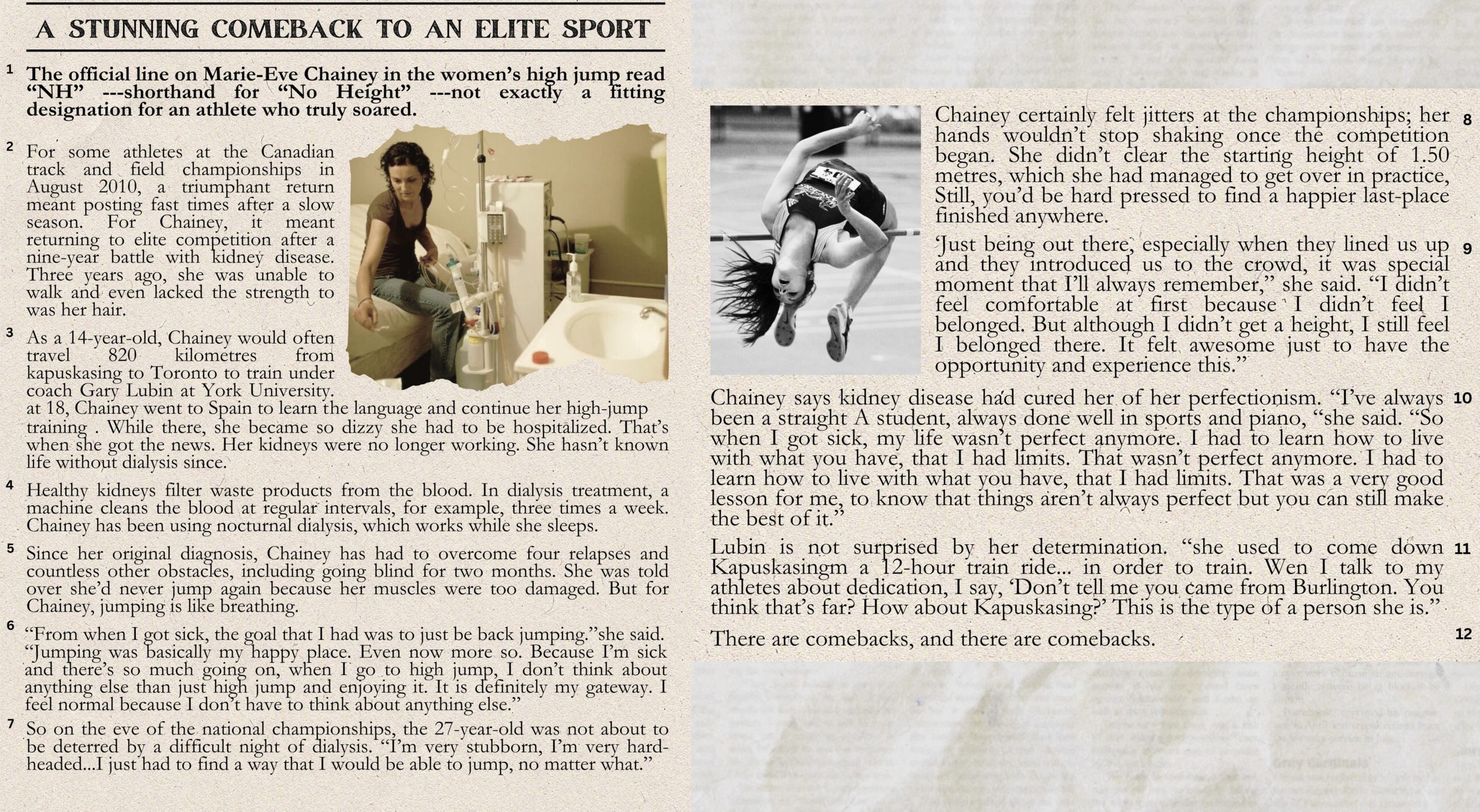
The information in paragraphs 1 to 3 is organized in a cause and effect structure.
It starts by presenting the outcome ("The official line on Marie-Eve Chainey in the women’s high jump read “NH”") and then proceeds to explain the cause of this outcome ("For Chainey, it meant returning to elite competition after a nine-year battle with kidney disease"). The subsequent sentences provide further details about Chainey's journey, including her struggles with kidney disease and the impact it had on her ability to participate in high jump competitions.
Therefore, the correct answer is: Cause and effect
Select the appropriately worded sentence.
The correct sentence is:
"Taking frequent breaks can improve focus and concentration."
This sentence is written correctly because it starts with a gerund ("Taking") followed by the subject ("frequent breaks"). The verb "can improve" agrees with the subject, and the rest of the sentence is grammatically sound. Additionally, it effectively conveys the idea that taking frequent breaks can lead to improved focus and concentration.
What concept ties the opening paragraph and the conclusion together?
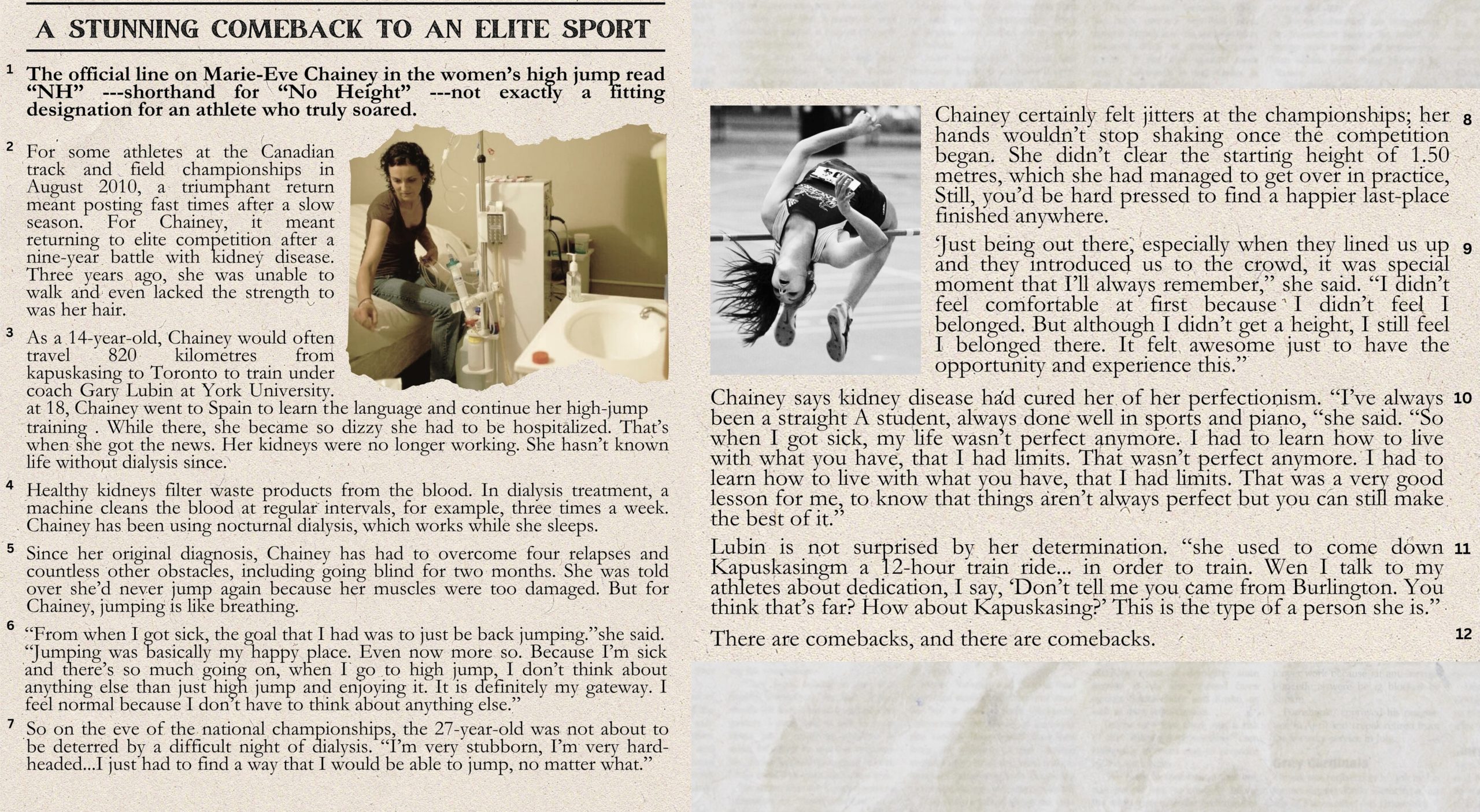
The idea that connects the introductory paragraph to the conclusion is that "Chainey's last-place finish is a victory." The introductory paragraph sets the stage by describing Chainey's designation as "NH" in the high jump, indicating that she did not clear a height in the competition. Despite this, the conclusion reflects on Chainey's satisfaction with her experience at the national championships, emphasizing that even though she didn't achieve a height, she still felt a sense of belonging and fulfillment. This highlights the idea that her participation and perseverance itself were victories, regardless of her final ranking in the competition. Therefore, the correct answer is:
Why does paragraph 5 matter in terms of the choice?
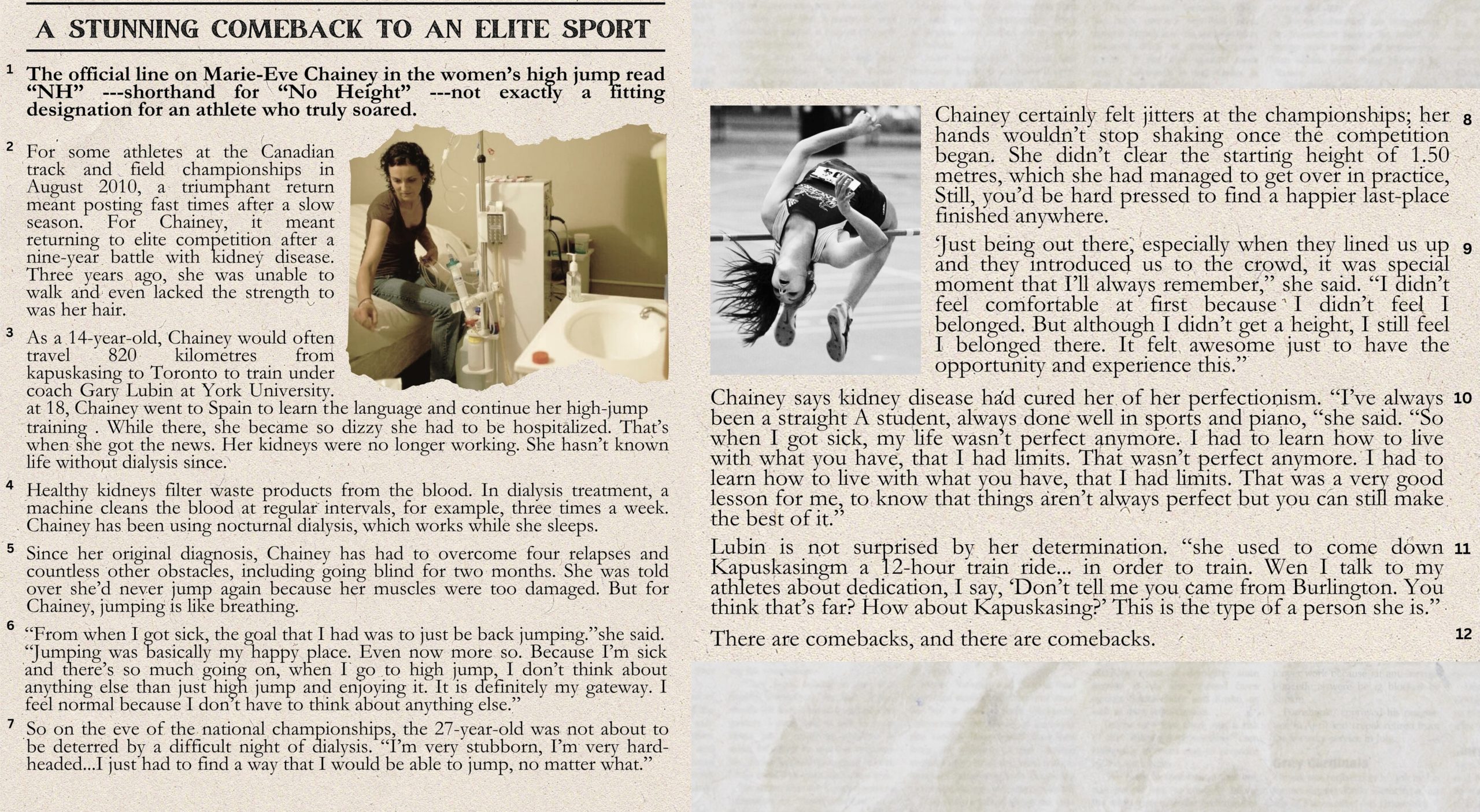
Paragraph 5 is important to the selection because it reveals Chainey's determination. This paragraph discusses Chainey's mindset and attitude as she faced challenges during the national championships. Despite feeling nervous and not clearing the starting height, Chainey's determination to compete and her positive outlook shine through. She reflects on the experience and expresses gratitude for the opportunity to participate, highlighting her resilience and determination to pursue her passion for high jump despite obstacles.
Which of the following is the best way to wrap up this paragraph?
The necessity for public transportation is a problem in many communities. There is a limited amount of room for above-ground train lines, and building new subways is costly. Reducing street congestion doesn't necessarily require adding additional buses. Fare hikes are unpopular with transit customers, but they are one way to acquire funds for upgrades.
This option effectively summarizes the challenges discussed in the paragraph regarding public transportation, including the cost of construction, limited space for expansion, congestion issues, and financial constraints. It conveys the complexity of the issues involved and suggests that finding solutions to transit problems is not straightforward. Therefore, the correct answer is: "There are no easy solutions to transit problems."
